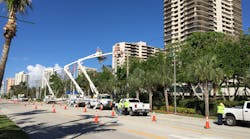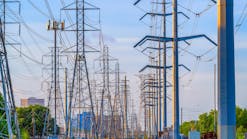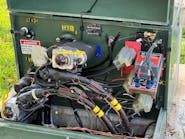Building the Underground Distribution Grid of the Future to Support Clean Energy Goals
We set goals for renewables, net zero energy and carbon free. These resource-related goals will require a 21st-century distribution grid that is reliable, resilient and still affordable. Will it be our grandfather’s distribution grid? No.
It will be a modern, integrated grid that accommodates distributed energy resources like rooftop solar, fuel cells, storage, and vehicle to grid electric vehicles (EV). This increasingly complex grid that delivers the clean electricity that we need for our future needs to be fundamentally transformed into a new and dynamic technological wonder. Underground electric distribution lines will be an important part of that transformation. Therefore, as we set ambitious goals for clean electricity, we need to do the same for the distribution grid that delivers that electricity. I submit that we need to achieve 50% underground by 2040.
Today, the electric distribution system in America is approximately 20% underground. Some public power utilities like Ft. Collins, Colorado Springs, and Anaheim have had underground ordinances for years. They have beautified their cities and improved the performance of their systems. Fort Collins is 99% underground and is 99.9% reliable. Colorado Springs started in the 1970’s and today is 77% underground with 99.9% reliability. They estimate they can be all underground with another $2.2 billion investment. Anaheim has been engaged in its Home Underground Program (HUG) since 1990 with excellent results. And, the phone and cable TV utilities in Anaheim paid to go underground as well.
Investor-owned utilities (IOUs) have put new neighborhoods underground for years, and now, many large IOU’s like PG&E, FP&L, WEC Energy Group and Dominion are engaged in mulit-year, multi-billion dollar programs to “strategically” underground laterals and other key parts of their systems.
PG&E will spend $15-30 billlion to underground the first 10% of its system. It plans to have 3600 miles of line places underground by 2026 and be one third of the way to their 10,000 mile goal. CEO Patti Poppe has said they are rebuilding PG&E from the “underground up.”
Florida Power & Light will ramp up in 2025 to a $1 billion per year spend on converting overhead laterals to underground. Its three-year Storm Secure pilot program was so successful that the Florida Public Service Commission is allowing Duke and TECO to do similar undergrounding programs.
WE Energy Group’s Wisconsin Public Service has undergrounded 2000 miles of overhead lines in the last eight years increasing its percent underground from 27% to 39% with very high customer satisfaction and customer willingness to pay for the underground. This success will carry over to its other companies as part of its progressive Deliver the Future initiative.
Dominion Energy started its “strategic undergrounding” program almost 10 years ago. Today, it has achieved better system resiliency supported by empirical data. Graciously, it shares its lessons learned and best practices especially when it comes to customer involvement and satisfaction!
These municipal and IOUs are starting to understand the total value of underground over the life of the asset. The data supports it. Data on capital cost, data on operations and maintenance (O&M), data on reliability, and data on resiliency measured by total time of line restoration.
Our planners and engineers must do the total cost of ownership analysis and make prudent evaluations that support fundamental business decisions for our executives, our regulators and, ultimately, our customers.
What is the customer cost in lost local gross domestic product of an outage? What will the cost of tree trimming be five to 10 years from now? How can I reduce truck rolls and improve ESG? How can I improve worker and public safety? How can I beautify the streetscape and improve the quality of life for my customers? What can be a new and positive part of improved customer service? Electric utilities are asking these questions and, increasingly in many cases, the answer is underground.
So, is 50% underground by 2040 unreasonable? Of course not, in fact it might be low.
Building the underground distribution grid of the future to support the clean resource goals of the future goes hand in hand.
We cannot achieve the complexities of near 100% renewable and net zero energy without a state of the art grid to support it. Will an underground grid with better equipment, cables, splices and terminations be enough? Will the new underground line sensing technology married with artificial intelligence deliver as promised? Will we drive real cost out of O&M? Will 50% be transformational or do we need 75% underground to really move the needle and impact shareholder and customer value?
We will address these issues in the year to come. Our industry needs to have a debate. Will 50% underground by 2040 be transformational to support the resource goals that we are pledged to achieve? Will our stakeholders agree? Time will tell.
The members of the The Power Delivery Intelligence Initiative advocate for a fair evaluation of the total cost of ownership over the life of the overhead or underground transmission or distribution line asset. Come join us.
Mike Beehler P.E., is the national spokesperson for the Power Delivery Intelligence Initiative and the chief opportunity officer for Mike Beehler & Associates LLC.


